A sensor is an apparatus that senses and quantifies physical alterations or situations in its environment and transforms these records into signals.
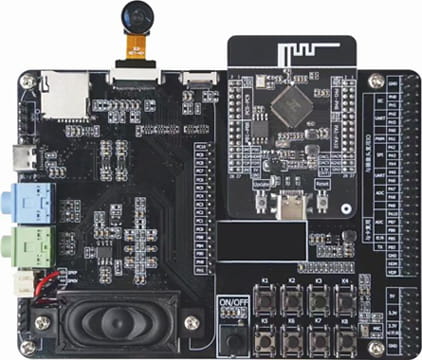
Using a sensor in a printed circuit board(PCB), electronic structures can benefit from its responsiveness to many stimuli, including mild, temperature, pressure, and motion.
Sensor PCBs find many applications, from monitoring the environment and business tactics to enabling features in consumer gadgets. They turn environmental occurrences, such as motion, proximity, and temperature, into quantifiable signals, which makes automation, manipulation, and statistics gathering viable.
The idea of a sensor represents the mathematical connection between the physical quantity and the electrical signal emitted by the sensor.
Often, a transfer function is used to describe this connection.
S = F (PQ)
where,
S is the electrical signal output by the sensor.
PQ is the physical quantity being measured.
F is the transfer function that describes the relationship between the physical quantity and the electrical signal.
Depending on the precision and the sensor PCB layout, this transfer function can be linear or nonlinear. For example, the connection can be stated as in a primary linear case.
S = m. PQ + b
m represents the linear relationship's slope.
b is the y-intercept
This formulation shows that the physical quantity (PQ) and its slope and y-intercept parameters decide the linear dating among the output signal(s) and PQ. Sensors with nonlinear characteristics or those involving complex physical principles have a greater complex mathematical representation.
Types of Sensors That Can be Used in PCB
In a PCB, various sensors can be used for industrial process control, monitoring, security, and automation tasks. The PCB sensors include:
Temperature sensors
Temperature sensors include thermocouples thermistors and infrared (IR) sensors. They are used for hardware temperature monitoring and environmental temperature and humidity detection.
Pressure sensors
Pressure sensors include barometers, piezoelectric sensors, and strain gauges. They use a diaphragm (stainless steel diaphragm, silicone diaphragm, etc.) as a medium to measure the pressure of gases and liquids and convert it into an electrical signal for output.
Light sensors
Light sensors include photodiodes, phototransistors, and light-dependent resistors (LDRs). They are sensor processors for brightness. In tablets and mobile phones, light sensors provide an adaptive brightness operation, which can automatically adjust the screen brightness according to the ambient light around the mobile phone, giving people the most comfortable visual effect.
Proximity sensors
Proximity sensors include ultrasonic sensors, infrared proximity sensors, and capacitive proximity sensors. They measure distances between objects by ultrasonic waves or lasers. In mobile phones, proximity sensors are used near the receiver to turn off the screen when the user’s face is close to avoid accidentally operating the phone screen when answering a call.
Accelerometers
Accelerometers include microelectromechanical systems (MEMS) accelerometers and piezoelectric accelerometers. They measure acceleration, tilt, vibration, and shock. They are used in automotive vehicles, airplanes, anti-theft equipment, positioning detection, etc.
Gyroscopes
Gyroscopes include MEMS gyroscopes and fiber optic gyroscopes. They measure the angular rate of rotation of a system. When the external system rotates, the internal rotating device maintains a constant direction and speed. By measuring the difference between the two systems, the rotation angular velocity of the current system is obtained.
Motion sensors
Motion sensors include passive infrared (PIR) sensors and radar motion sensors. PIR sensors do not emit but only detect infrared energy. They are used in thermal imaging, fiber optics, and heat sensing. Radar motion sensors, also called active motion sensors, having a transmitter and a receiver, detect motion by measuring the changes in sound or radiation reflected to the receiver.
Humidity sensors
Humidity sensors include capacitive humidity sensors and resistive humidity sensors. Capacitive humidity sensors are made of polymer film capacitors, and resistive humidity sensors are made of a substrate and a moisture-sensitive film.
Gas sensors
Gas sensors include carbon monoxide (CO) sensors, methane sensors, and air quality sensors. They are used to detect the concentration or presence of flammable, flammable, toxic gases, the consumption of oxygen, etc.
Biometric sensors
Biometric sensors include fingerprint sensors, iris scanners, etc. They are typically semiconductors that convert an individual's biological characteristics into electrical signals. Biometric sensors can be used for blood sugar monitoring for diabetics, pathogen detection, heart rate monitors, authentication for security, etc.
Image sensors
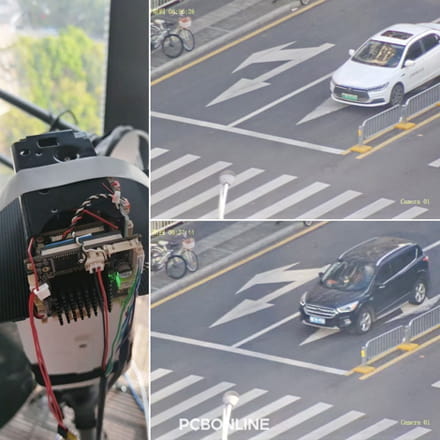
Image sensors include charge-coupled device (CCD) sensors and complementary metal-oxide-semiconductor (CMOS) sensors. They convert optical images into electronic signals and are widely used in electronic optical devices. The applications include high-definition cameras, road monitoring, and face identification.
Sound sensors
Sound sensors include microphones and acoustic sensors. They receive sound waves and convert them into analog signal output. Sound sensors are used in phones, recorders, voice-controlled lights, medical hearing aids, deep-sea surveying, and traffic and industrial noise monitoring.
Force sensors
Force sensors include strain gauges and piezoelectric force sensors. They detect mechanical quantities such as tension, tension, pressure, weight, torque, internal stress, and strain. They can be used in rehabilitation robots, vehicle brake pedal force testing, manipulator force control in industrial automation production lines, etc.
Position sensors
Positioning sensors include potentiometers and Hall effect sensors. Potentiometers convert mechanical displacement into resistance or voltage output with a functional relationship. Hall effect sensors are magnetic field sensors used to sense position, pressure, current, temperature, etc.
Magnetic sensors
Magnetic sensors include magnetometers and Hall effect sensors. They are used for measuring magnetic fields.
Radiation sensors
Radiation sensors include Geiger-Muller counters and scintillation detectors. They detect whether the radiation intensity is within a set threshold and can be set to activate above or below the threshold.
Sensor PCB Design
In this blog, we take IR sensor PCB design in Proteus as an example to show sensor PCB design.
Before learning about IR sensor PCB design in Proteus, you’ll need to know how IR sensors work first.
An IR sensor PCB emits infrared light using an LED and detects with a photodiode.
In an infrared spectrum, there are three primary areas: close-to, mid, and long-way infrared. The wavelengths for the near-IR place lie between 700 and 1400 nm, the mid-IR location between 1400 and 3000 nm, and a long way-IR vicinity between 3000 nm and 1 mm.
Heat sensing uses the mid-IR area, thermal imaging uses the ways-IR vicinity, and fiber optic and infrared sensors use the near-IR area.
IR sensor PCB Design in Proteus
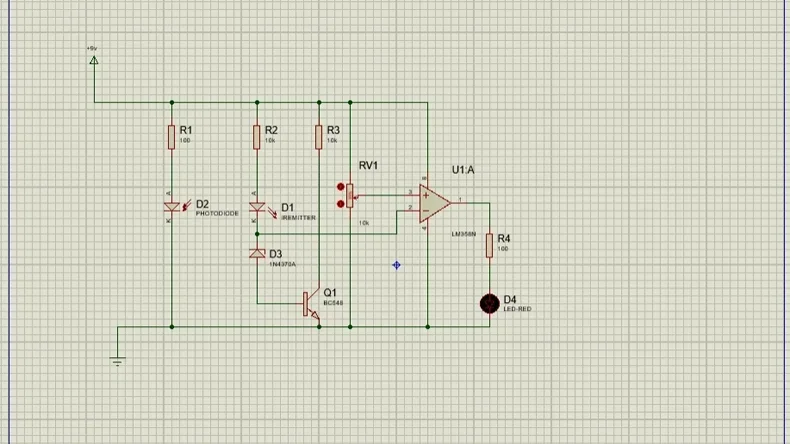
In an infrared sensor circuit, a photodiode, a potentiometer (POT), a crimson LED, a transistor (BC548), a Zener diode (1N4730A), a crimson LED, a resistor, and an IR emitter are the majority. Below are the electronic components to be used in an IR sensor PCB.
Components/Proteus Library
- Zener Diode (1N4730A)
- Transistor (BC548)
- IR Emitter (IR Meter)
- Red LED
- Amplifier (LM358N)
- Photodiode Potentiometer (POT)
- Resistors (varying values)

Circuit Design of IR Sensor PCB
The circuit's 1N4730A Zener diode allows you to manage the voltage.
Ensure the ground is hooked up to the band-different cathode and the characteristic of the energy supply is attached to the band-extraordinary anode.
Building the circuit calls for the use of the NPN transistor (BC548). Attach the lowest of the Zener diode to the output, the emitter to the floor, and the collector to the strength deliver.
You can create the sensing mechanism by aligning the IR emitter and photodiode so that they face distinctive directions.
Simulation
After the design, it is necessary to have the PCB simulation to evaluate the electrical behavior of the sensor PCB.
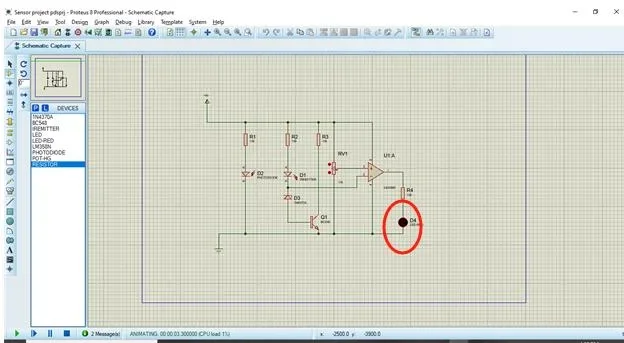
As you can see, the circuit is not working because we change the potentiometer reading.

We changed the value of POT-hg UP to 58 (it depended on Resistance values).
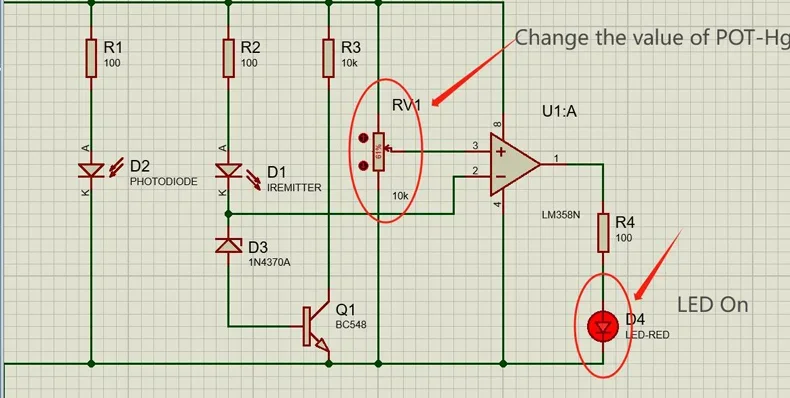
Sensor PCB Manufacturing and Assembly at One-Stop
PCBONLINE is a one-stop electronic manufacturing service (EMS) supplier that provides one-stop sensor PCB manufacturing and assembly. The professionals at PCBONLINE provide on-demand sensor PCBs to meet your application demands.
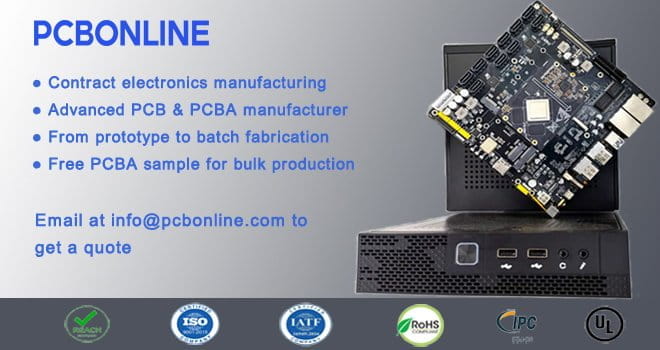
PCBONLINE offers free PCB DFM (design for manufacturing), DFA, DFT, and DFX for sensor PCB fabrication, assembly, and box-builds.
Fabrication and assembly of all types of PCBs with any sensors are available at PCBONLINE from prototypes to bulk production.
Relying on its EMS PCB assembly factory, PCBONLINE can take part in co-procurement for original sensors and other components at lower prices.
High-quality sensor PCB and products certified with ISO 9001:2015, IATF 16949, RoHS, REACH, UL, and IPC.
Over the past 24 years, PCBONLINE has manufactured and assembled sensor PCBs for many applications, including remote control, HD cameras for road monitoring, temperature measurement, motion detection, night vision detection, rail safety, gas analyzer, missile guidance, climatology applications, medical applications, industrial process control, etc. If you need sensor PCBs, contact info@pcbonline.com to get a quote.
Conclusion
Sensor PCBs in automation and communication are widely used because of their dependability and flexibility. There are many types of sensors in the market, which makes sensor PCB design with a lot of options. This blog lists the types of sensors, briefly introduces them, and shows IR sensor PCB design and a PCB manufacturer. If you need sensors, PCB, or PCBA, don’t hesitate to talk to PCBONLINE.
PCB fabrication at PCBONLINE.pdf








